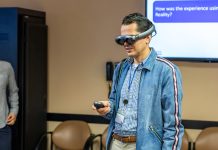
It’s been over 130 years since German psychologist Hermann Ebbinghaus discovered the “forgetting curve.” Despite being uncovered about the time the first gas-powered car was patented, the findings remain valid. In the context of professional learning, they should sound an alarm and also be a beacon pointing toward change.
In the 1880s, Ebbinghaus found that people lose up to 40 percent of newly learned information within 20 minutes, up to 55 percent within an hour, and more than 75 percent within six days. However, Ebbinghause also discovered that memory and retention are enhanced when information is rehearsed and repeated over time.
These concerns come into sharper focus when you look at them through the lens of leadership development training — often the largest expense item in an organization’s training and development budget. Leadership development training consumes 35% of most learning and development expenses. On average, that means most companies spend $2,000 to $15,000 per participant on leadership development training.
To meet the two-pronged challenge of the forgetting curve and budget constraints, companies need to re-evaluate their approach to training and adjust to meet the needs of their learners. Here’s where Ebbinghaus’s research on what can help people retain new learning comes into play today. Modern research shows that the more interactive and experiential the learning experience is, the higher the learner’s retention rate. On the other hand, traditional forms of learning, such as presentations, keynotes, and lectures, perform the lowest in aiding retention.
Three Methods of Learning
Specifically, three modern methods of learning have been proven to improve retention and ensure great ROI in training:
- Short bursts of learning
- Reinforcement activities
- Group coaching
1. Short Bursts of Learning
Often called microlearning, short bursts of learning drive higher learning engagement and retention because they deliver short, focused sessions that are less overwhelming and more engaging. Also, they’re flexible; employees can fit short learning sessions into their busy schedules.
Short bursts of learning work by breaking down complex information into digestible segments, typically 5-15 minutes, focused on a single topic or skill. Because short bursts of learning can be delivered in several ways, they’re even more adaptable to the different learning styles in today’s five-generation workforce.
- Micro-courses, through online platforms as part of a multi-threaded development approach that includes micro-learning
- Video clips that are short, engaging, and effectively cover specific skills or concepts
- Infographics that deliver visual representations of information and simplify complex ideas
- Quizzes and flashcards in interactive, digital formats to reinforce learning through quick, repetitive, and visually engaging practiceImplementing short bursts of learning starts with identifying key topics. One tactic is to dissect your training content or work with a partner to create smaller, tightly defined topics and skills. From there, you need to:
1. Create engaging content. Develop or outsource engaging and meaningful content and make it easily accessible.
2. Leverage technology. Deliver microlearning modules to employees using a learning management system (LMS) or other learning solution.
3. Schedule regular learning. Encourage employees to spend a few minutes each day or week doing short training sessions.
2. Reinforcement Activities
Reinforcement activities boost information retention by requiring learners to review and apply their knowledge through repeated exposure. They also oer continuous learning, ensuring that learning goes beyond initial training.
Ranging from assessments to practical exercises and interactive discussions, reinforcement activities can be delivered in several formats:
- Practice scenarios for learners to apply their knowledge in real-life situations
- Group discussions, where learners share insights and reinforce their understanding
- Assessments and quizzes to test and strengthen a learner’s knowledge and get valuable feedback
- Follow-up emails to periodically reinforce knowledge retention with recaps of key points and additional learning resourcesImplementing reinforcement activities starts with integrating this strategy into existing training programs to ensure continuous engagement and alignment with your learning strategy. The next steps are to:
1. Use technology. Leverage your LMS to automate quizzes, assessments, and follow-up emails for each learner.
2. Encourage peer interaction. Foster an environment where learners can engage in group discussions and share their experiences.
3. Track progress. Monitor learners’ progress through assessments and provide constructive feedback.
3. Group Coaching
Involving a facilitator or coach who works with a small group of learners to guide them through their learning process leverages the group’s collective knowledge and experiences to enhance learning.
Group coaching encourages learners to tap into the collective knowledge and experiences of the group while benefiting from personalized guidance and feedback. Fostering a sense of community and collaboration enhances learner engagement and knowledge retention.
Group coaching can take many forms to fit nearly any workflow or industry, including:
- Peer coaching in pairs or small groups where employees coach each other on specific skills or topics
- Workshops for learners to discuss challenges, share solutions, and receive guidance
- Mentorship programs for experienced employees to provide guidance and support to newer employees
- Webinars led by experts who deliver insights and answer questions
To implement group coaching, start by thinking small. Organize employees into small groups based on their roles or training needs. The next steps are:
1. Select facilitators. Choose experienced facilitators or coaches who can guide the group effectively.
2. Schedule regular sessions. Repetition and reinforcement are key. Plan regular group coaching sessions to maintain momentum and learner engagement.
3. Encourage participation: Foster an environment where all group members feel comfortable sharing their thoughts and experiences.
Shifting Organizational Approaches to Training
To maximize the ROI of training programs, win against the forgetting curve, and improve knowledge retention, L&D leaders must create interactive and experiential learning experiences. This is a shift that requires:
- Investing in technology: Leverage an LMS and online tools to deliver microlearning modules, reinforcement activities, and group coaching sessions.
- Creating a continuous learning culture: Encourage employees to engage in ongoing learning and development rather than one-time training sessions.
- Measuring training effectiveness: Regularly assessing the effectiveness of training programs through feedback, assessments, and performance metrics.
By making this shift and implementing these three strategies, organizations can ensure that their training programs are effective and deliver a significant return on investment.




